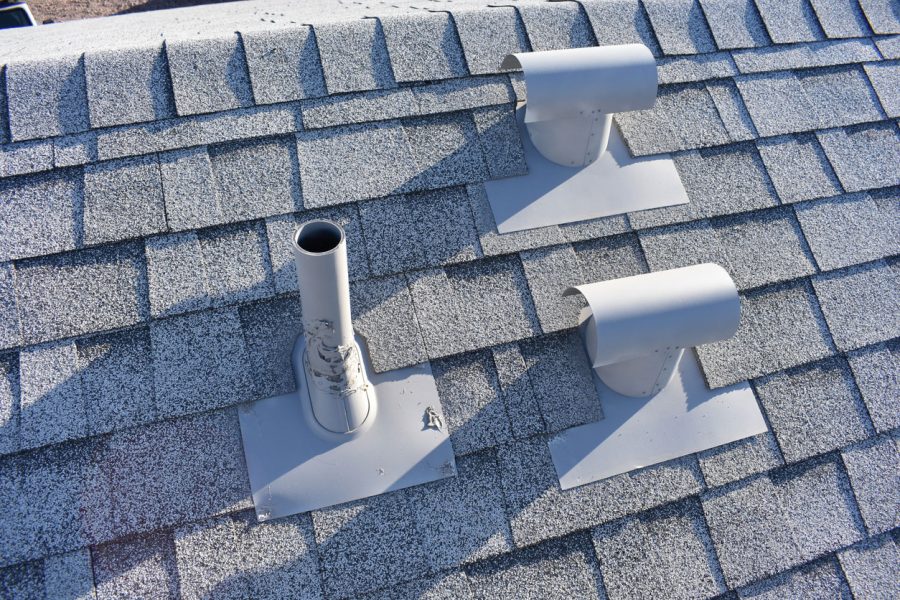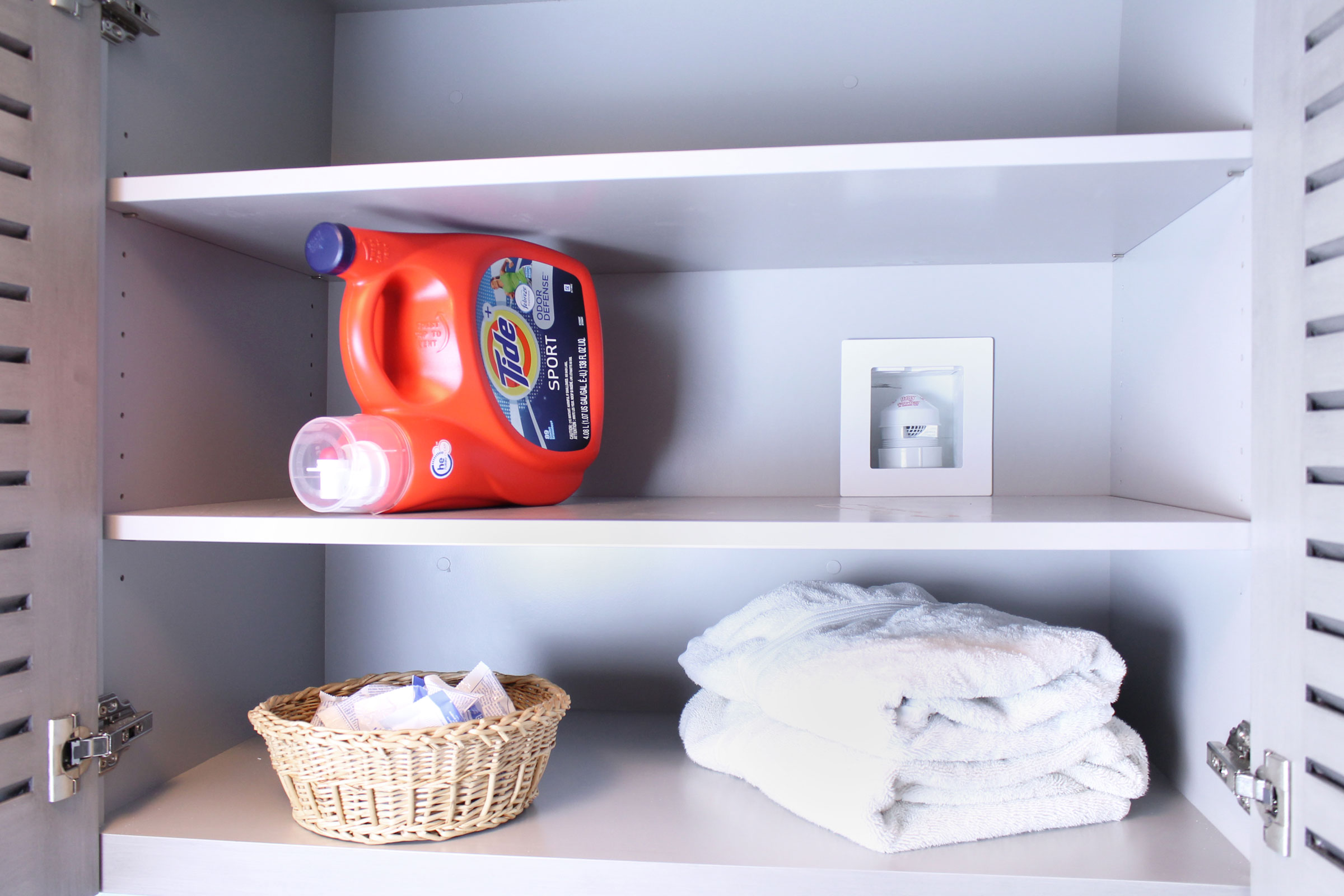Story at a glance:
- Air admittance valves complement traditional stack vents, relieving negative pressure locally and minimizing the need for additional vertical vent runs.
- Air admittance valves can be especially useful when you can’t connect to an existing venting system, need to reduce roof penetrations, or want to reduce costs.
A building’s performance is only as strong as its systems.
Plumbing, although located within walls and under floors, plays a key role in overall efficiency and constructability. As design teams seek smarter ways to coordinate mechanical systems within increasingly tight spaces, even long-standing plumbing practices are being reevaluated.
One area of change is venting. Traditional vent stacks have remained largely unaltered for decades, yet they demand space, materials, and coordination across multiple trades. Air admittance valves (AAVs) provide a proven method for simplifying this process by allowing local air intake within the drain, waste, and vent (DWV) system.
What is an Air Admittance Valve?

Photo courtesy of Oatey
An AAV is a one-way mechanical valve that is installed locally at the site of a plumbing fixture, allowing proper venting to occur without a connection to a larger venting system and stack vent.
It is important to note that AAVs do not replace traditional stack vents. Every building must still include at least one vent stack that penetrates the roof to relieve positive pressure within the plumbing system. AAVs are designed to complement that system, not eliminate it, by relieving negative pressure locally and minimizing the need for additional vertical vent runs.
For projects seeking leaner, more efficient plumbing design, this balance between traditional venting and modern air admittance technology is helping engineers and contractors streamline installations without compromising performance or code compliance.
Rethinking the Hidden Impact of Venting
Every DWV system relies on a balance of air and water movement. When water flows through the pipe network, it creates negative pressure that must be relieved for drainage to function properly. In most buildings this is achieved through a system of vertical vent stacks that rise through multiple floors and extend out the roof.
While this approach is effective, it is both material- and labor-intensive. Every added vent run means more pipe, fittings, and penetrations through walls and roofs. Each penetration requires sealing, flashing, and inspection, which adds to coordination between trades and creates future maintenance points.
These vent systems can involve hundreds of feet of pipe in large commercial or multifamily buildings. Reducing even a fraction of that material while maintaining performance can significantly improve installation efficiency and long-term reliability.
Simplifying Venting Without Compromise

Photo courtesy of Oatey
AAVs perform the same function as a traditional vent stack, but locally and without direct connection to open air. When negative pressure develops the valve allows air to enter the DWV system, restoring equilibrium and allowing wastewater to flow freely. When pressure stabilizes, it closes again to prevent the escape of sewer gases.
Because AAVs open and close automatically through simple mechanical action, they require no maintenance or adjustment once installed. Their small size and adaptability make them useful in applications where running a vent stack would be difficult, like island sinks, basement bathrooms, or compact mechanical spaces.
Models like the Oatey® Sure-Vent® Air Admittance Valve are designed for residential and commercial systems. The Sure-Vent uses a gravity-operated elastomeric diaphragm that responds instantly to pressure changes, opening to admit air and sealing tightly once the system stabilizes. Its durability and long-tested reliability make it a widely used option for contractors and engineers who need performance that meets code while simplifying system design.
Air admittance valves can be especially useful in several common scenarios:
When you can’t connect to an existing venting system: AAVs are an effective alternative when connecting to an existing vent system is not possible due to complex pipe routing or structural obstructions. They are ideal for island sinks, remote bathroom groups, remodels, and additions that would otherwise require specialized venting techniques. In these cases, AAVs offer greater flexibility in arranging plumbing fixtures within a space.
To reduce roof penetrations: Because AAVs open and close automatically during normal DWV system operation, they eliminate the need to create additional roof penetrations. Many building owners prefer this approach to preserve the roofline for design and aesthetic reasons. Fewer penetrations also reduce potential leak points over time, supporting long-term building performance.
To save money: By reducing the amount of vent pipe and associated fittings, AAVs help lower both material and labor costs. This makes them a cost-effective solution in new construction and retrofit projects, offering an efficient alternative without compromising performance.
Implications for Building Design Efficiency and Sustainability
Venting design affects far more than the plumbing system itself. By replacing long vertical vent runs with localized air admittance valves, design teams can achieve multiple layers of efficiency that extend throughout the construction process.
Reduce vent stack routing complexity: Traditional vent stacks must be threaded through framing, coordinated with structural members, and sealed at the roof. AAVs minimize these penetrations, freeing ceiling space for HVAC and electrical systems.
Simplify coordination between trades: Fewer vertical penetrations reduce clashes in tight mechanical spaces and ease multi-trade coordination during BIM (Building Information Modeling) and prefabrication planning.
Increase design flexibility: Compact venting layouts enable plumbing to fit within tighter ceiling cavities or behind walls without requiring additional chases, thereby supporting higher space utilization and adhering to design intent.
Accelerate construction and reduce waste: Standardized AAV assemblies streamline installation, shorten timelines, and lower both material and labor costs.
Support modular and prefabricated projects: AAVs enable repetitive layouts and consistent venting details, minimizing field adjustments and improving quality control.
Contribute to sustainable, resource-efficient construction: Less piping, fewer penetrations, and simplified coordination align naturally with LEED and green-building principles by reducing waste and improving long-term performance.
Although AAVs are not marketed as sustainability products, their efficiency supports the goals of sustainable construction. Fewer vent stacks mean reduced material use and fewer penetrations through the building envelope. This streamlines labor, minimizes waste, and contributes to resource-conscious design.
For engineers and contractors, the value lies in simplicity. A properly placed AAV can save time, open up space for other systems, and provide greater flexibility in design coordination.
For building owners and facility teams, fewer penetrations and connections can lower maintenance demands and improve long-term reliability.
The Oatey® Sure-Vent® Air Admittance Valve demonstrates how simple technology can help achieve these results. It supports the broader effort to design plumbing systems that are reliable, efficient, and easy to integrate into today’s complex buildings.
Code Compliance and Best Practice
AAVs are recognized under the International Plumbing Code and International Residential Code as a compliant method for relieving negative pressure in plumbing systems. However, local jurisdictions govern their final approval. Some areas, such as parts of California, limit their use, so contractors and engineers should confirm with the authority having jurisdiction before specifying them.
AAVs should be viewed as a supplement to, not a replacement for, traditional venting. While they effectively relieve negative pressure, they do not handle positive pressure events, which still require at least one open vent through the roof. When used correctly, they can streamline system design without compromising performance or code compliance.
Proper Sizing for Optimal Performance
Selecting the correct size AAV is critical for reliable operation. AAVs are rated by drainage fixture units (DFUs), which reflect the number and type of fixtures they serve. For example, a 1-1/2 inch AAV typically handles around 20 DFUs and is suitable for a single sink, bathtub, or laundry standpipe. Larger 2 inch and 3 to 4 inch models can accommodate approximately 160 DFUs and more than 500 DFUs, respectively. Verifying DFU ratings and local code requirements ensures the AAV is correctly matched to system demand.
Addressing Common Misconceptions
Even as AAVs gain wider acceptance, some misconceptions remain. Some professionals believe they are less durable than conventional venting or are only suitable for small-scale or residential work. AAVs are designed for long-term reliability, with minimal moving parts and no maintenance requirements.
The Sure-Vent valve, for example, features a single flexible diaphragm that responds to pressure changes without relying on springs or complex seals. This design makes failure extremely unlikely and allows consistent performance over thousands of cycles. Reported odor or leak issues are most commonly caused by incorrect installation or improper placement; proper installation typically prevents these problems.
When installed according to code and manufacturer guidance, an AAV performs as intended for the life of the plumbing system.
Moving Forward
As buildings become more compact and systems more interconnected, plumbing design must adapt. AAVs offer a way to improve efficiency without adding complexity. By rethinking how venting is handled, engineers can design plumbing systems that are simpler to install, easier to coordinate, and better aligned with the demands of high-performance construction.
In a time when every detail of a building contributes to its environmental and operational outcomes, even small design changes can make a meaningful difference.
FAQs
Where should an air admittance valve be located?
Always follow local plumbing codes and regulations, as they take precedence over state or national standards. An AAV should be installed downstream of a P-trap, as high as possible under a cabinet with at least 6 inches of clearance for airflow, and it must remain accessible for inspection or replacement. Keep it indoors unless it is specifically rated for outdoor use.
When should an air admittance valve be installed?
An air admittance valve (AAV) should be installed when connecting to an existing vent system is impractical or space-limited, such as with island sinks, basement baths, remodels, or additions, and where reducing roof penetrations can simplify construction and lower the risk of leaks. It’s also a smart choice in new builds that seek to save on labor and materials while maintaining reliable drainage performance.
What size air admittance valve should I install?
The correct AAV size depends on pipe diameter, the number of fixtures being vented, and local code requirements. Most residential sinks or bathtubs use a 1-1/2 inch valve, but larger systems may require 2 inch or greater sizes. Always confirm DFU ratings and local regulations before installation.
Can an air admittance valve go bad?
Yes, AAVs can malfunction due to their mechanical nature. If you smell foul odors near a plumbing fixture with a Sure-Vent installed, it likely means the Sure-Vent isn’t sealing properly and should be replaced. Slow drains are typically caused by partial blockages in the drain, not the Sure-Vent. When drains are partially blocked, the Sure-Vent stays closed to prevent backflow. It’s advisable to clean the drain in such cases.


